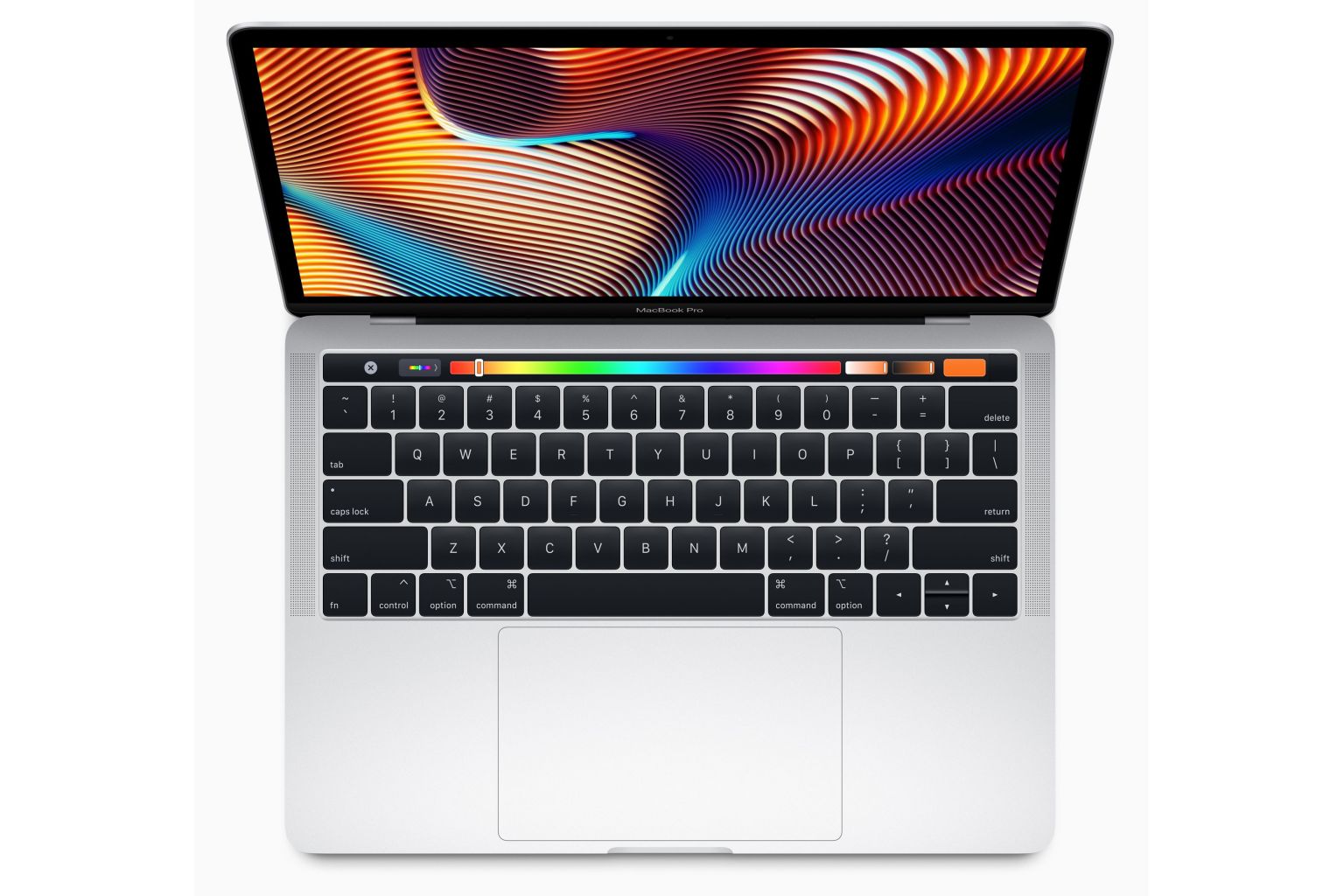Tech review: Apple MacBook Pro (13-inch, 2019) offers great battery life
Sign up now: Get ST's newsletters delivered to your inbox

In terms of looks, the new MacBook Pro (13-inch, 2019) has not changed at all from its predecessors apart from the Touch Bar.
PHOTO: APPLE
Trevor Tan
Follow topic:
Apple no longer offers a non-Touch Bar 13-inch MacBook Pro laptop. The series' 13-inch entry-level model now comes with a Touch Bar and the Touch ID feature, as well as a high-resolution (2,560 x 1,600 pixels) True Tone display.
The entry-level unit comes with a 1.4GHz Intel Core i5 quad-core processor, Intel Iris Plus 645 integrated graphics processing unit (GPU), 8GB of system memory and 128GB of flash storage. Our review unit is slightly bumped up with 16GB of system memory and 1TB of flash storage.
In terms of looks, the new MacBook Pro (13-inch, 2019) has not changed at all from its predecessors apart from the Touch Bar. There are two Thunderbolt ports on the left side of the laptop and a 3.5mm headphone jack on the right.
The Touch Bar, which sits above the keyboard, is a strip of Oled touchscreen with a resolution of 2,170 x 60 pixels that can display millions of colours as well as contextual keys depending on the app you are using. For instance, when you are using the Safari web browser, browser tabs will appear on the Touch Bar.
There are some who do not find the Touch Bar useful. But I like using the contextual keys on the Touch Bar when editing photos in Adobe Photoshop CC or slicing audio tracks in djay Pro.
On the far right end of the Touch Bar is the Touch ID fingerprint reader, which doubles up as the Power button. During set-up, you will be asked to enrol your fingerprint.
The True Tone display changes colour temperature according to the ambient light for a better viewing experience. The brightness level can go up to 500 nits and the display supports the P3 wide colour gamut for better colour accuracy when editing photos and videos. I find the display sharp and detailed and readable under bright sunlight. On the downside, relatively thick bezels surround the display.
FOR
- Superb display
- Fast performance (for an entry-level model)
- Great battery life
AGAINST
- A tad pricey
- Thick bezels
- Keyboard feels soft and has shallow travel
SPECS
Price: From $1,899
Display: 13.3-inch, 2,560 x 1,600 pixels
Processor: From Intel Core i7 1.4GHz quad-core (customisable up to i7 2.8GHz quad-core)
System memory: 8GB (customisable to 16GB)
Graphics: Intel Iris Plus Graphics 645 (customisable up to Intel Iris Plus Graphics 655)
Storage: From 128GB of flash storage (customisable up to 2TB)
Connectivity: 2 x Thunderbolt 3 (USB-C)
Weight: 1.37kg
RATING
Features: 4/5
Design: 4/5
Performance: 4/5
Battery life: 5/5
Value for money: 4/5
Overall: 4/5
The keyboard uses an updated version of the "butterfly" mechanism found in the keyboards of previous MacBook Pros (since 2015) that has garnered much attention due to issues like letters repeating or not appearing and unresponsive keys. I have not experienced any such issues with my three-year-old MacBook Pro though.
The 13-inch MacBook Pro's new keyboard feels softer than previous versions. Key travel is quite shallow. I still prefer the clicky feel of my seven-year-old MacBook Air's keyboard.
Performance wise, this entry-level 13-inch MacBook Pro is surprisingly no slouch. In the GeekBench 4 benchmark test, it scored 4,607 (single-core) and 16,654 (multi-core), compared to the 2016's version of 3,877 (single-core) and 7,549 (multi-core).
It performed admirably in tasks like photo editing - it is able to convert 200 RAW images in around six seconds, comparable to the 2018 15-inch MacBook Pro with discrete GPU. All the apps I used felt responsive and there were no major delays when using resource-intensive apps like the Final Cut Pro video editing software.
Battery life has improved greatly. The laptop lasted 7hr 24 minutes in our video loopback test, compared with 6hr 8 minutes with the 2016 version - the last 13-inch MacBook Pro we reviewed.
Perhaps the biggest downer is its pricing. While prices start at $1,899, it gets quite expensive once you bump up specifications like system memory and flash storage space.
With 16GB of system memory and 1TB of flash storage, this review unit costs $3,079 - rather pricey compared to its Windows counterparts. And this configuration is, I feel, better suited than the base model for today's computing needs.

